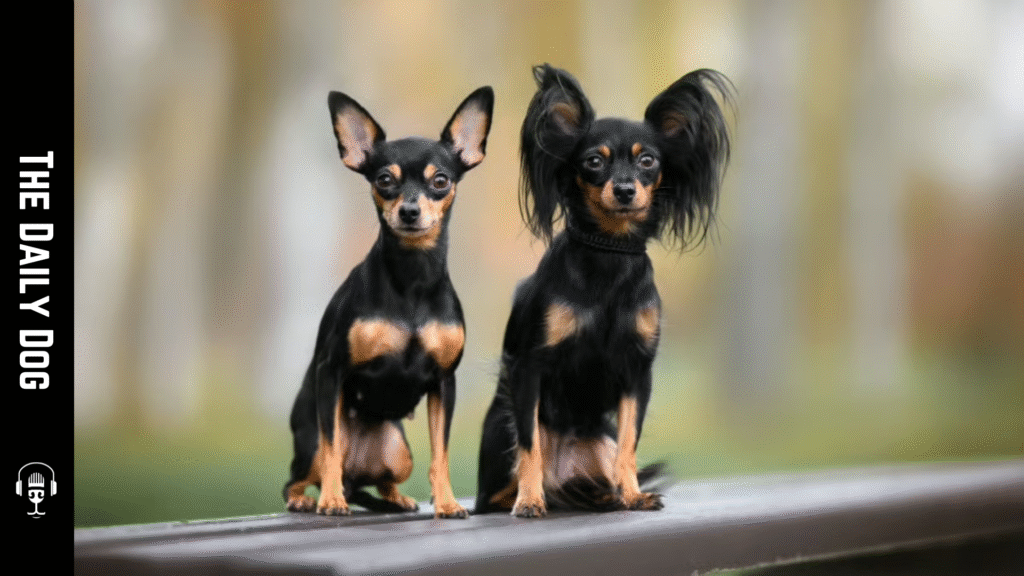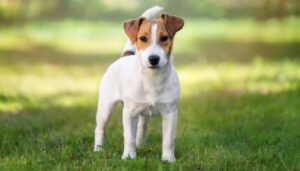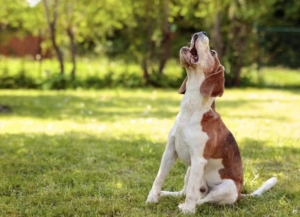The Russian Toy, sometimes affectionately called the Russian Toy Terrier, is a small but strikingly confident breed that has captured the hearts of families and shedding litt les for decades. With a history rooted in Russia, this charming dog blends elegance, intelligence, and a lively personality into a package that fits well in apartments and active homes alike. Whether you’re drawn to its delicate frame, expressive eyes, or endearing loyalty, the Russian Toy offers a compelling combination of companionship and character that can enrich daily life for years to come.
A Brief History and Distinctive Look
Originating in Russia, the Russian Toy is one of the oldest toy breeds in the region. Originally developed for companion duties and light vermin control, these dogs evolved into a breed celebrated for their resilience and poise. The breed’s appearance is unmistakable: a small, well-proportioned body, a refined head, and a poised demeanor that can appear both delicate and bold. Coat varieties add another layer of variation, with smooth and long-haired types presenting distinct silhouettes while sharing the same confident, alert temperament. The breed’s overall aesthetic is one of grace—an elegant, compact form that carries a strong, alert expression and a well-set tail.
Temperament and Family Compatibility
The Russian Toy’s temperament is where its true charm lies. Known for being devoted, affectionate, and highly intelligent, these dogs thrive on close interaction with their human families. They form strong bonds with their people and often exhibit a gentle, kid-friendly nature when raised in a nurturing environment. At the same time, these dogs retain a lively spark; they are curious, sometimes mischievous, and enjoy interactive play that challenges their quick minds. This blend of warmth and wit makes them excellent companions for households that can provide daily mental and physical engagement.
Despite their small stature, Russian Toys are not shy about expressing their opinions. They can be vigilant and keenly aware of their surroundings, occasionally adopting a bold stance when they sense a threat or simply when they want to participate in family activities. Proper socialization from an early age helps ensure a well-rounded dog that is comfortable with new people, other pets, and varied environments. With consistent training and positive reinforcement, the Russian Toy becomes a well-adjusted member of the family who is eager to please and quick to learn.
Grooming, Care, and Health Considerations
Grooming needs depend on the coat type. Smooth-coated Russians tend to require less maintenance, with regular brushing to reduce shedding and occasional baths to keep the coat gleaming. Long-haired varieties, by contrast, benefit from more frequent brushing to prevent tangles and mats, along with routine trimming to maintain a neat silhouette. Regardless of coat length, routine dental care, nail trimming, and ear checks are essential parts of a healthy grooming routine.
Health is an important consideration for potential owners. The Russian Toy is generally robust for a toy breed, but like all dogs, it can be predisposed to certain hereditary conditions. Regular veterinary checkups, a balanced diet, and a consistent exercise regimen help minimize risk and support a long, active life. Potential owners should look for breeders who perform health screenings and provide clear lineage information, ensuring dogs come from responsible lines with attention to genetic health.
Exercise and Mental Stimulation
While the Russian Toy is compact, it remains an energetic partner that benefits from daily activity. Shorter, more frequent walks combined with indoor play sessions help burn energy and keep the dog mentally engaged. Because these dogs are intelligent and inquisitive, mental stimulation is just as important as physical activity. Puzzle toys, obedience games, and short training sessions that challenge problem-solving skills can prevent boredom and discourage unwanted behaviors.
Social interaction plays a key role in maintaining a well-balanced dog. Regular exposure to a variety of people and environments helps the breed remain confident and well-mannered in different settings. For families with a busy schedule, training routines can be integrated into daily activities—short practice periods after meals or before bedtime can reinforce good behavior while strengthening the bond between dog and owner.
Training and Behavior
Positive reinforcement techniques work best with the Russian Toy. Rewards-based training, using treats, praise, and play, encourages a cooperative attitude and accelerates learning. Early training is important, as it lays the foundation for a well-moned, well-behaved companion. Consistent boundaries, gentle corrections, and patient repetition help ensure that training remains a positive, low-stress experience for both dog and owner.
Socialization from a young age is also crucial. Exposure to different people, animals, and environments reduces shyness and fosters adaptability. Enrolling in a puppy socialization class or arranging playdates with other well-behaved dogs can help the Russian Toy develop appropriate social skills. With their natural intelligence, these dogs often excel in basic obedience and can enjoy more advanced activities such as trick training or short agility challenges for mental and physical enrichment.
Choosing a Russian Toy: Considerations for Prospective Owners
If you’re contemplating adding a Russian Toy to your family, consider the following factors to ensure a good fit:
- Living space: The breed’s small size makes it well-suited for apartments, but daily activity and mental engagement remain essential.
- Time and attention: Russian Toys thrive on human interaction. Owners who can provide daily companionship and training will see the most satisfying results.
- Grooming commitment: Depending on coat type, grooming needs can vary. Budget time for brushing and periodic professional grooming if desired.
- Health and longevity: Seek reputable breeders who prioritize health testing and responsible breeding practices to increase the likelihood of a healthy, long-lived companion.
Finding a Breeder or Rescue
Responsible sourcing is key when bringing a Russian Toy into your home. Look for breeders who provide health clearances and allow you to meet the puppy’s parents when possible. Ask about the breed’s temperament in the lineage, vaccination records, and socialization opportunities the puppies have already experienced. Alternatively, consider rescue organizations or breed-specific rescues that focus on providing loving homes for dogs in need. Rescue dogs can be wonderfully adaptable and grateful additions to a family, often bringing a unique, established personality.
The Role of the Russian Toy in Modern Homes
Today, the Russian Toy continues to serve as an ideal companion for individuals and families who value a dog with a refined presence and a spirited personality. The breed’s blend of loyalty, intelligence, and affectionate nature makes it well-suited to a variety of lifestyles—from single professionals who want a devoted companion to families seeking a small, lively pet that participates in daily activities. Their compact size, paired with a big-hearted temperament, creates a dog that is both a stylish presence and a reliable, loving friend.
A Small Dog with a Distinctive Spirit
The Russian Toy stands out not just for its petite frame, but for the depth of its companionship and the brightness of its personality. With proper care, training, and enrichment, this breed can be a radiant, loyal partner that adds warmth and charm to daily life. Its adaptable nature makes it a fitting choice for a variety of households, from city apartments to more expansive homes, as long as owners commit to consistent interaction, mental stimulation, and routine veterinary care. For the right family or individual, the Russian Toy delivers a rare blend of elegance, resilience, and affection that makes every day a little more joyful.
Call to Action
Listen to our podcast, Dog Works Radio for training tips and tricks from top trainers that have worked with over 3000 clients at https://dogworksradio.com










